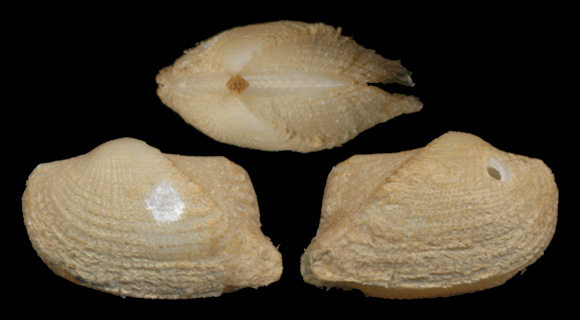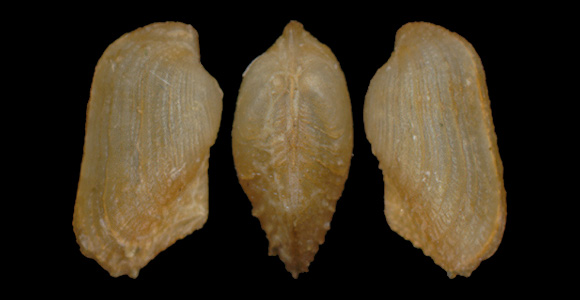
« Shell markedly small, thin, semitransparent, somewhat shining and convex. Outline subrectangular to slightly trapezoidal. Dorsal margin long, straight. Ventral margin gently sloping, slightly convex to almost straight, sometimes faintly sinuosus. Posterior margin straight, sloping, slightly frilled, subacutely joining the ventral one. Anterior margin curving into the ventral one. Umbo markedly anterior, prosogyrate. Keel somewhat acute. Dorsal area narrow, becoming wider in gerontic specimens. Concentric scultpure of sligthtly imbricated lamellae, becoming shortly projecting on the keel and weakly nodulose on the postero-dorsal area. Thin radial wide-spaced riblets, slightly crenulating the lamellae. Hinge-plate thin, with a wide endentulous gap. Three short anterior and five elongate oblique posterior teeth in the holotype. Byssal gape very narrow. Adductor scars unequal, faintly ridged, the posterior larger than the anterior one. Byssus retractor scar elongate, almost as long as the posterior tooth row. […] Colour withish to cream, often radially caramel tinged. »
50m deep, on bottom of coral and gorgonians, Scilla, Reggio-Calabria, SW. Italy. 6,5mm.

« The present species can be distinguished from A. secreta in being smaller, thinner (semitransparent), more convex, more acutely keeled and weakly scuptured. Variability mainly involves the outline (more or less trapezoidal). The keel sculpture may be fluted to slightly foliate or vesicular. Distribution: Pleistocene to Recent, Sicily. » – R. La Perna: “On Asperarca Sacco, 1898 (Bivalvia, Arcidae) and two new mediterranean species”, Boll. Mal. 33, Roma, 1998 via BHL.
Same spot. 4mm.